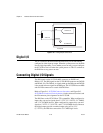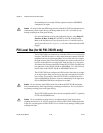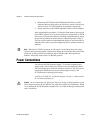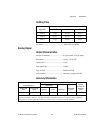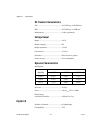
Chapter 2 Hardware Overview of the NI 7831R
© National Instruments Corporation 2-23 NI 7831R User Manual
Field Wiring Considerations
Environmental noise can seriously affect the measurement accuracy of the
device if you do not take proper care when running signal wires between
signal sources and the device. The following recommendations mainly
apply to AI signal routing to the device. They also apply to signal routing
in general.
Take the following precautions to minimize noise pickup and maximize
measurement accuracy:
• Use differential AI connections to reject common-mode noise.
• Use individually shielded, twisted-pair wires to connect AI signals to
the device. With this type of wire, the signals attached to the positive
and negative inputs are twisted together and then covered with a shield.
You then connect this shield only at one point to the signal source
ground. This kind of connection is required for signals traveling
through areas with large magnetic fields or high electromagnetic
interference.
• Route signals to the device carefully. Keep cabling away from noise
sources. The most common noise source in a PXI DAQ system is the
video monitor. Keep the monitor and the analog signals as far apart as
possible.
Use the following recommendations for all signal connections to the
NI 7831R:
• Separate NI 7831R signal lines from high-current or high-voltage
lines. These lines can induce currents in or voltages on the NI 7831R
signal lines if they run in parallel paths at a close distance. To reduce
the magnetic coupling between lines, separate them by a reasonable
distance if they run in parallel or run the lines at right angles to each
other.
•Do not run signal lines through conduits that also contain power lines.
• Protect signal lines from magnetic fields caused by electric motors,
welding equipment, breakers, or transformers by running them through
special metal conduits.
Refer to the NI Developer Zone tutorial, Field Wiring and Noise
Considerations for Analog Signals, at
ni.com/zone for more information.




